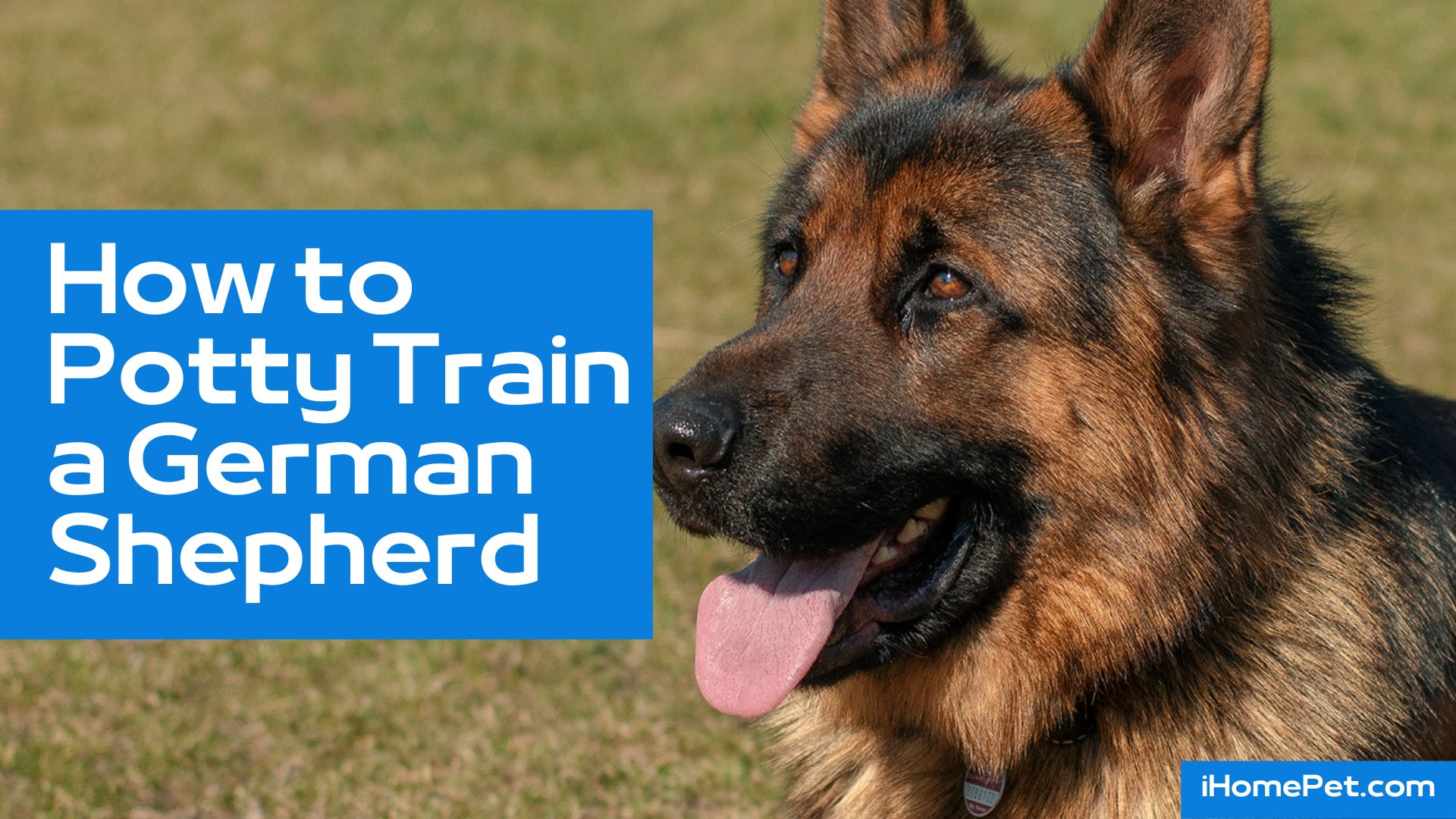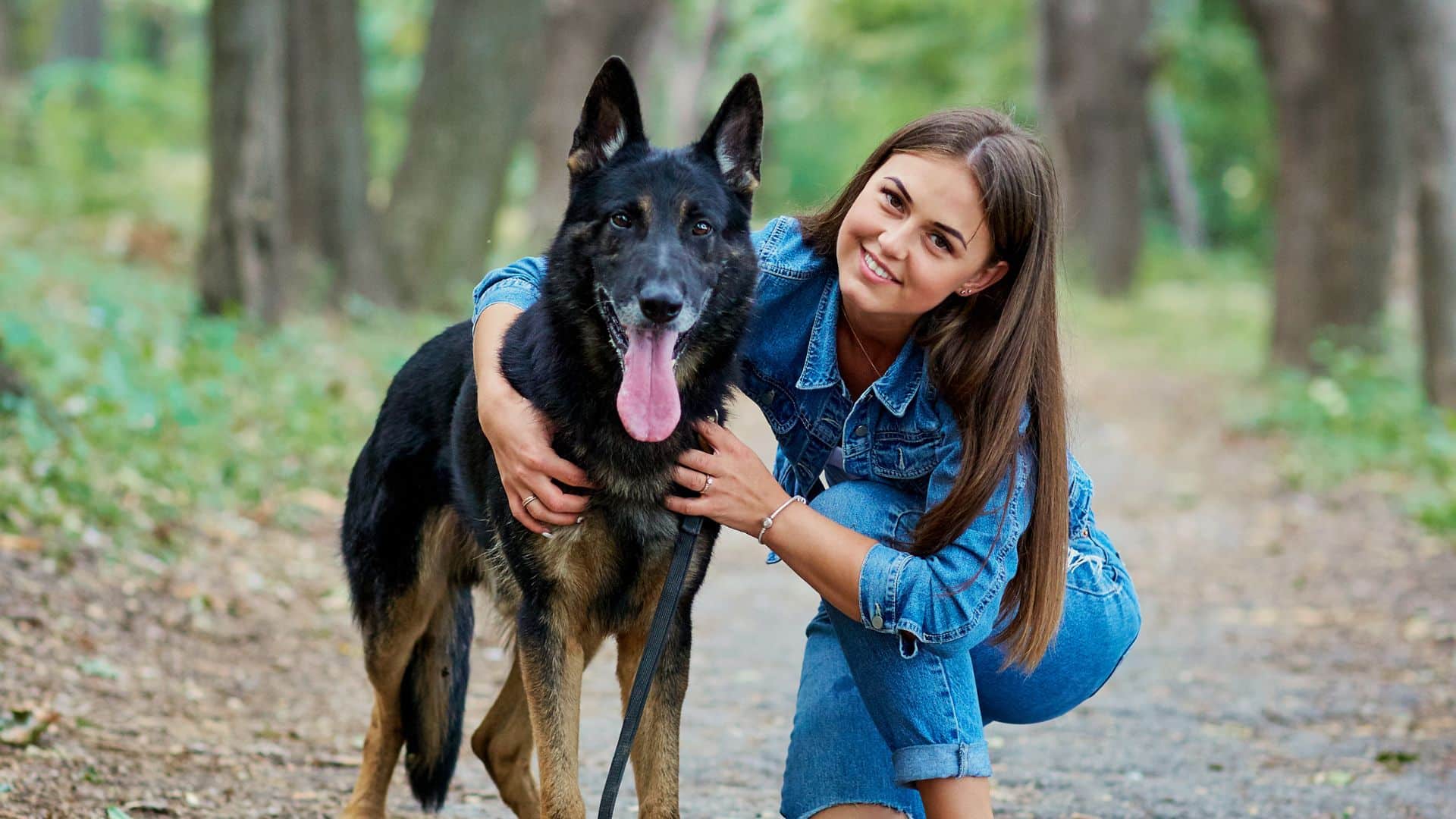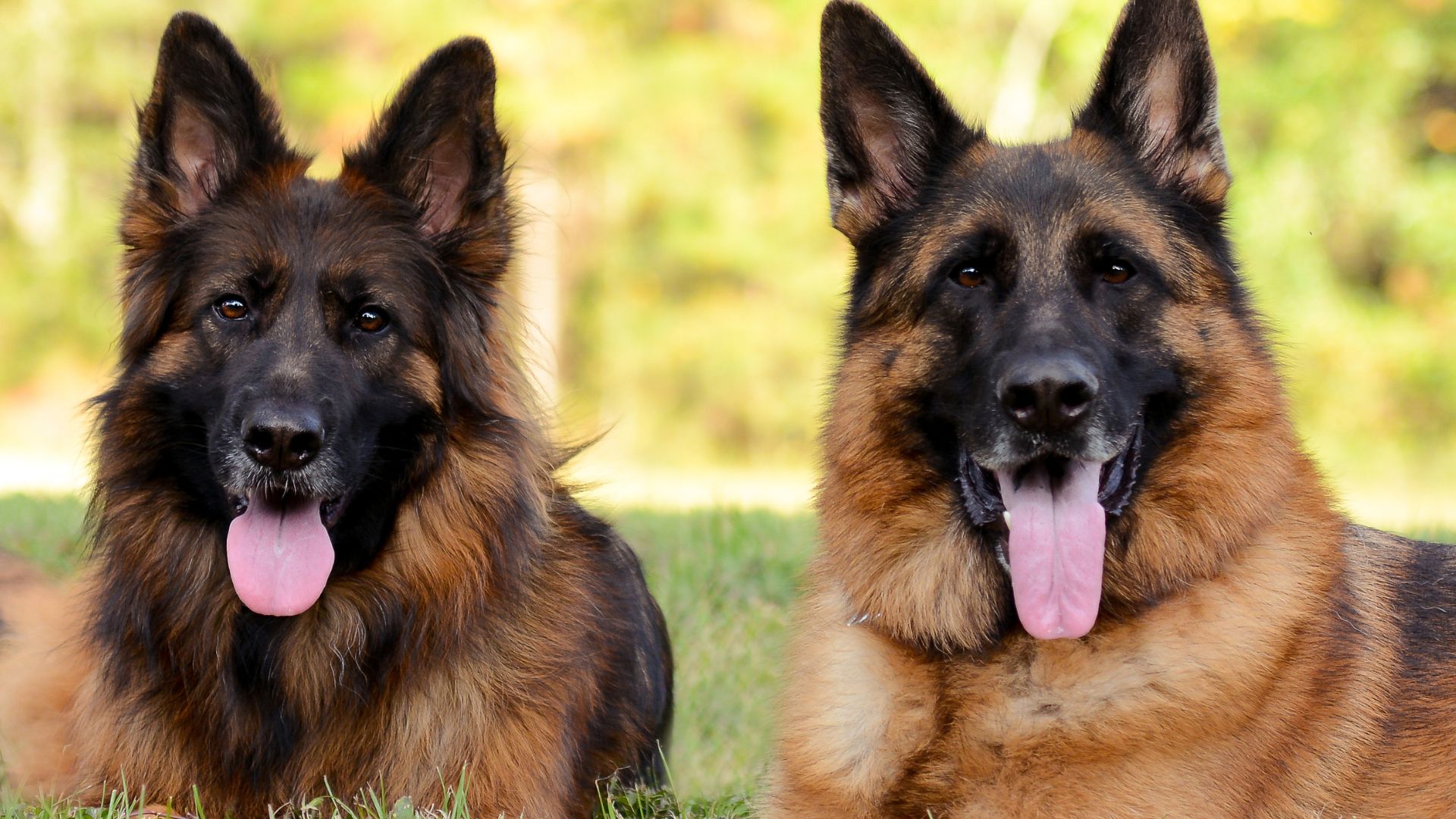Learning how to potty train a German Shepherd should be the first task you undertake immediately after you get a new puppy. If you neglect this training, it will be hard to manage your dog’s bad behavior in the future. Coming home to a poopy floor and wet carpets is not what you want to settle for.
You should take charge of your pup’s life and ensure she does not ruin your house with poop and pee. Potty training requires you to be patient and consistent. It is important to establish a routine and take your German Shepherd outside to the designated area regularly.
Rewarding your pup with treats and praise when they go in the right direction will reinforce great behavior. Additionally, it is crucial to clean up accidents properly and avoid punishing your dog for accidents, as this can create fear and confusion.
With time, patience, and positive reinforcement, your German Shepherd will learn to potty outside and become a well-behaved member of your household. The first thing you should do is designate a specific area in your yard for your German Shepherd to use as their potty spot.
This will help them understand where they are supposed to go and make the training process easier. Additionally, it is important to establish a consistent feeding schedule so you can predict when your dog will need to go outside.
For the first two weeks, clean off their sleeping area. and any accidents they have inside the house with an enzyme cleaner to remove any lingering scent. This will help prevent them from associating those areas with potty time and encourage them to use their designated spot outside.
How to potty train a German shepherd – Ultimate guide to avoid common mistakes

Not training your German Shepherd pup during her initial days is a mistake that a number of GSD owners make. There is this common belief that you will do it when the time is right. Such a time never reaches.
It is more sensible to start the training on the very first day you bring your pup home. So, here are some of the excellent tips on potty training German Shepherds using the best laid out plans.
#1. Keep the timing right
GSD puppies normally have a very efficient digestive system. The first step in training your puppy is to take her out to poop at the destined place after her meals. Being able to predict her motive helps a great deal.
German Shepherds feel the urge to poop after approximately 10 or 30 minutes after having their meals. Do you feed her regularly? If yes, then give her about 30 minutes then take her out to do her stuff there and not the house.
#2. Mind your attitude
Just like in any dog training schedule, the attitude you portray to your dog during training is key. GSDs in their own intelligence would quickly read the manner in which you behave; your voice, body language and general appearance.
Her response to your commands is dependent on your attitude. Rushing her or shouting at her will make the training take longer and become harder. Shouting at your puppy will make her become more aggressive.
#3. Pee pads are a “No”
If the training is not going your dog’s way, you could be tempted to ditch the training altogether and use pee pads instead. Pee pads train your dog to do her business inside the house, which is what you want to eliminate in the first place.
When the dog gets older and can no longer use the pee pads or training mats, you then have to train her to pee and poop outside the house. Postponing the problem does not help you. You better solve it once and for all when the pup is still young.
If you still need to pad train your pup, do it after she has mastered the outside bit. The pad could be useful during the night or when you leave your dog in the house as you leave.
#4. Be consistent
When a dog owner is trying to figure out how to potty train a German shepherd, you have to put measures in place to take her to pee in the same designated spot all of the time. This hastens the learning process. The puppy will also be aware of the place to relieve herself outside the house when need be.
The puppy will not be able to master the training if you take her to a new spot each and every time. She would not know where to go when left alone. Alternatively, she would defecate all over the grass outside as she thinks everywhere is okay to relieve herself.
#5. Reading the puppy’s body languages
Your GSD puppy will not always need to poop after the 30 minutes each time after meals. A time shall come when she will give signs at off times. Your potty training should factor this into consideration.
The pup would normally growl, sniff, and walk strangely in circles when she needed to pee and poop. You then have to take the pup outside.
Use a specific door that you want the puppy to associate with going outside to potty. This will help establish a routine and make it easier for the puppy to understand where she should go when she needs to relieve herself.
#6. Give clear commands
Taking your puppy outside every time she needs to do so does not help her. She needs to learn how to survive on her own. To make this possible, teach your puppy some commands. Commanding him to ‘go potty’ makes it easy for you.
Knowing the designated place and teaching your puppy this command eliminates the need to walk the dog out every potty time. By teaching your puppy basic commands, you are laying the foundation for their future training and potential as a service dog.
Service dogs that are trained to assist individuals with disabilities are often taught a wide range of commands to help them navigate daily tasks. These commands can include tasks such as opening doors, retrieving items, or even providing emotional support.
#7. Reward correct behavior
After you have taken considerable amounts of time to potty train your GSD puppy, take some time off and watch as she performs the procedure herself. If she gets it right, give her some sort of treat or even affection.
The feeling of knowing that she is doing something right will make her do it every time. There should be no reward each time though as she may get too attached to rewards.
#8 Use a designated potty area
Don’t lose hope if your dog learns nothing in the first few weeks of training. Consistency and patience are key when it comes to potty training. Remember to reward your dog every time they successfully use the designated potty area, as positive reinforcement will help reinforce the desired behavior.
Program a potty schedule so that your puppy learns how to get full bladder control and understands when it’s time to go outside. Gradually increase the time between potty breaks as your dog becomes more reliable. Additionally, be vigilant and supervise your dog closely during the training period to prevent accidents and reinforce the habit of using the designated potty area.
Potty training a German Shepherd puppy is a learning opportunity for both you and your dog. It requires patience, consistency, and understanding of your dog’s individual needs. By establishing a routine and providing positive reinforcement, you can help your German Shepherd puppy develop good potty habits that will last a lifetime.
If you do not have a back yard, find an appropriate place for your dog to eliminate, such as a nearby park or a designated area in your apartment complex. It’s important to consistently take your German Shepherd puppy to this spot to reinforce the habit of using it for potty breaks.
#9 Contact a professional dog trainer
A doggy daycare that has a professional trainer will enforce a strict routine. Provide structured activities to keep your dog mentally stimulated throughout the day. They will also be able to address any behavioral issues and provide personalized training sessions for your dog’s specific needs.
The dog walker will take them to the same spot every day for consistency and to reinforce any training commands you have been working on. Additionally, they can provide socialization opportunities with other dogs during their walks, helping to improve your dog’s behavior and overall well-being.
Potty training can be rough in the beginning, but with the help of a professional trainer or dog walker, they can assist in establishing a consistent potty routine and provide guidance on effective techniques. They can also offer advice on crate training or other methods to help expedite the potty training process and ensure your dog’s success.
Stay a step ahead by consistently reinforcing positive behaviors and redirecting any unwanted behaviors. This will help your dog understand what is expected of them and make the training process smoother. Remember to be patient and consistent in your approach, as it may take time for your dog to fully grasp the training concepts.
Learn how positive reinforcement works

Your dog’s behavior can drastically improve with potty and crate training through the use of positive reinforcement. Positive reinforcement involves rewarding your dog for exhibiting desired behaviors, such as going potty outside or staying calm in their crate.
By consistently rewarding these behaviors with treats, praise, or playtime, your dog will associate them with positive experiences and be more likely to repeat them in the future. This method not only helps shape their behavior but also strengthens the bond between you and your furry friend.
When you house train a German Shepherd puppy, it is important to establish a consistent routine for bathroom breaks and provide ample opportunities for them to eliminate outside. Adult dogs will need a potty break every 4-6 hours, while puppies will need more frequent breaks.
Your dog will learn quickly that the outdoors is the right area to go potty. By consistently taking them outside to eliminate them and rewarding them with praise or playtime, your dog will develop a strong association between going outside and relieving themselves.
This will help them understand where they should go potty and reinforce the desired behavior. Additionally, providing regular bathroom breaks and establishing a routine will also prevent accidents inside the house and aid in the successful house training of your German Shepherd puppy.
How long does the training probably take?
After all the tips, this is the next question you would probably ask when training German shepherds. The truth is, there is no specific time frame for potty training. It could take a shorter time or longer depending on lots of factors.
Since GSDs are an intelligent dog breed, the training could take roughly between 2 and 6 weeks. All you need is to be meticulous with the training and take your puppy through it regularly. Remember to give consistent and clear-cut instructions.
If the training is not going as per the plan, do not hesitate to seek professional help. It could be that you are not doing it well or the pup does not respond well to instructions. Look for help when it is still early and make your dog responsible.
Training a German Shepherd Puppy
When learning how to potty train a German Shepherd puppy, it could look like a lot of work as you start, but after a while, you will start to enjoy it when the rewards begin to show.
Better still, the pup’s mom had already initiated responsible behavior in the pup while still with the litter. By keeping the crate clean, the pup would grow up with cleanliness in the background already.
A positive association with peeing inside the potty spot can be established by using rewards such as treats or praise whenever the puppy successfully goes in the designated area. Consistency and patience are key during this training process, as accidents may still happen.
With time and proper guidance, your German Shepherd puppy will learn to associate the potty spot with the appropriate behavior. Use high-value treats when you notice good behavior to reinforce the positive association.
Once your German Shepherd puppy is crate-trained, you should have an accident-free home as long as you continue to reinforce the potty training routine. It’s important to remember that accidents may still occur, especially during times of excitement or if the puppy is not feeling well.
How long does it take to get a German shepherd puppy potty trained?

When your dog does potty inside and you catch her in the act, it’s important to redirect her immediately to the designated potty area outside. Consistency and positive reinforcement are key to helping your German shepherd puppy learn where and when to go potty.
Water consumption plays an important factor in potty training a German shepherd puppy. Monitoring and regulating their water intake can help establish a routine for bathroom breaks and prevent accidents indoors. Additionally, patience and understanding are crucial, as every puppy learns at their own pace, so it may take several weeks or even months to fully potty train your German shepherd.
Do a few potty runs every few hours after you come back from work to ensure that your German shepherd puppy has the opportunity to relieve themselves outside. This will help reinforce the idea that going potty should be done in the designated area.
This is great advice and works well when it comes to preventing accidents indoors. However, it’s important to remember that accidents may still happen during the training process. If your German shepherd does have an accident indoors, it’s crucial not to punish or scold them, as this can create fear and confusion.
Dry or raw food for your new pup can be a big deal, so you can use it as positive reinforcement during potty training. For example, you can reward your German shepherd puppy with a small piece of dry food every time they successfully go potty in the designated area outside.
Things to keep in mind during the potty training process
Holding the pee for too long can cause your puppy to have a urinary tract infection, so it’s important to take them outside frequently to relieve themselves. Additionally, rewarding your puppy with praise or treats when they successfully use the designated poopy area can help reinforce good habits and speed up the training process.
Indoor accidents inside your home are common, and you should use an enzymatic cleaner or odor remover specifically designed for pet urine to thoroughly clean the affected area. This will help eliminate any lingering scent and discourage your puppy from using that spot again.
Additionally, it’s important to remain patient and consistent throughout the potty training process, as accidents are bound to happen. Use a regular schedule for your potty run and take your puppy outside at consistent times throughout the day. This will help them establish a routine and understand when it’s time to go potty.
Remember to praise and reward them each time they successfully use the designated area, reinforcing their good behavior. Most of the time, when a dog has an accident inside your house, it is your fault and not hers. It’s important to closely supervise your puppy, especially during the early stages of potty training, to prevent accidents from happening.
Using a crate speeds up the potty training process and helps establish a routine for your puppy. It can also help prevent accidents when you are unable to closely supervise your puppy. A warm jacket can help you withstand the cold weather during potty training sessions outside.
Last Updated on 06/02/2024 by Karen Snow
Hi! I’m Karen and a certified dog lover. As a freelance writer and blogger, I do my best to squeeze in some time with my dogs, learning more about the way they act and how I can make sure that they continue to stay well-cared for by yours truly.
My dogs have helped me through a lot, and this is my way of giving back to them! Besides animals, I also love to travel and cook, having explored my country’s restaurants and unique places. Follow me as I show you all the amazing tips and bits of information I learn along the way about our furry friends!
